

Yiche original After the release of -i pre-emptive test drive evaluation, many netizens raised various questions. On the eve of the launch of the new car, I will talk to you about our test results and summarize the core key points for your reference.
(The full text is about 3,500 words, the reading time is 12 minutes, and the reading difficulty is three stars.)

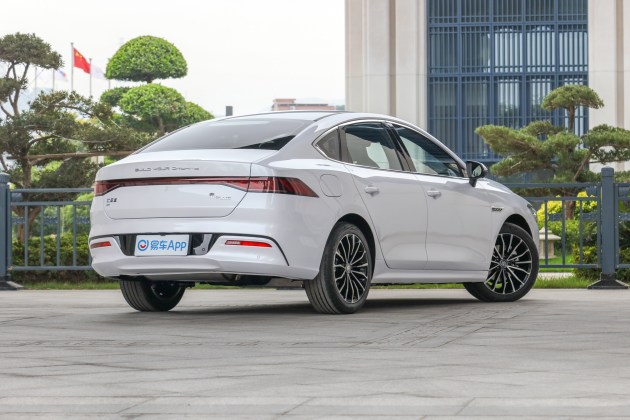
This time, we tested the version of -i with a battery life of 55km. Because it is an engineering trial car, we won’t give you a real shot analysis of the exterior and interior details. Please refer to the static experience video released earlier.
-i The length, width and height of the new car are 4765/1837/1495mm and the wheelbase is 2718mm respectively.

The -i top model will be equipped with a 12.8-inch adaptive rotating large screen, and equipped with DiLink intelligent interconnection system, including supporting most Android software applications and intelligent voice control functions, which is very smooth to operate and highly playable.
Regarding the performance of the new car configuration, I will use a video to explain it in detail. Please pay attention to my car number (car app search: Liang Shuming).

In terms of power, -i adopts the newly released DM-i super hybrid system, equipped with Xiaoyun-Plug-in special 1.5L high-efficiency engine and power blade battery. Its engine thermal efficiency is as high as 43.03%, and the fuel consumption per 100 kilometers of the new car is as low as 3.8L in the state of power loss.
Standard battery life and long battery life are available. The former has a pure battery life of 55km and the latter has a pure battery life of 120km.
The power of the corresponding driving motor will be different. The 55km version is equipped with EHS132, that is, the maximum power of the system is 132kW, the peak torque is 316N·m, and the official 100 km acceleration is 7.9 seconds; The 120km version is equipped with EHS145, that is, the maximum power of the system is 145kW, the peak torque is 325N·m, and the official 100km acceleration is 7.3 seconds.

Question 1: Can you always run without charging and only refuel? What is the fuel consumption level?
-i can run without charging. If you don’t have convenient charging conditions, you can use -i as a hybrid vehicle.
Under the condition of no charging, the engine can also drive the generator to charge the battery, and there is also the setting of energy recovery, and the battery power is always kept above 25% (the SOC setting value can be adjusted from 25% to 70%).
-i The working principle of driving in daily urban areas is mainly driven by motor, and the engine is assisted to generate electricity.
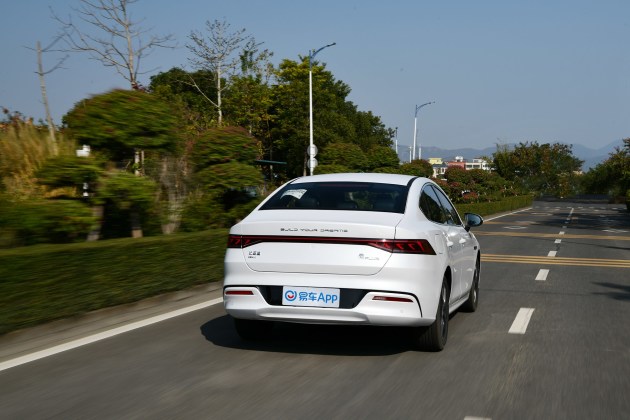
In order to give you a more rigorous understanding of the fuel consumption performance of the -i 55km version under different working conditions, we divide the fuel consumption test into two situations: urban working conditions (30km/h) and high-speed working conditions (speed limit 100-120km/h):
Fuel consumption test under urban working conditions in power deficit state;
When the -i 55km version we tested set off, the remaining power of the vehicle was 25%, and the SOC value was also set to 25%. At the same time, the degree of energy feedback was set to be large, and the driving mode was set to ECO mode. There were three adults in the car.The outdoor air temperature is 6-7℃, and the air conditioner in the car is set to 22℃ and the second grade air volume.
From the suburb of Pingshan, Shenzhen to Futian, the whole journey was 108.4km, the average speed was 36km/h, and the fuel consumption was 3.65L L. The comprehensive fuel consumption of Qin PLUS DM-i 55km version was 3.37L/100km.
Fuel consumption test under high-speed working condition in power loss state;
The same car, in the state of power loss, we filled up the oil in the suburbs of Shenzhen and set off directly on the expressway, driving at the highest speed limit (100-120km/h), and traveled a total of 156km. The actual test fuel consumption is 6.81L, and the comprehensive fuel consumption of -i 55km version is 4.37L/100km under high-speed working conditions.

Comparing this result with Guangzhou Automobile Twin Engine E+, which is also a PHEV, the fuel consumption of the latter is 5.45L/100km, and the fuel consumption performance of -i is quite excellent at both high speed and low speed.

In other words, even in the state of power loss (the lowest state of charge), the DM-i super hybrid model can achieve the fuel consumption level of hybrid models of the same level or even lower.
Question 2: What is the fuel consumption if it is in a state of daily charging?
Of course it will be lower. According to the information released by the Ministry of Industry and Information Technology, -i fuel consumption is 1.2L/100km, electric energy consumption is 11.7 kW h/100 km, electric energy equivalent fuel consumption is 1.3L/100km, and the lowest state-of-charge fuel consumption is 3.8L/100km.

Why can it be so low? In the last technical article on analyzing DM-i super hybrid, I have analyzed its structure and working principle. Everyone just needs to remember the characteristics of "electricity is the main factor and engine is the auxiliary factor". The engine has two purposes: directly driving the vehicle under high-speed working conditions and serving as the power source for the generator to generate electricity in daily driving. The DM-i super hybrid vehicle takes the driving motor as the power source most of the time, which reduces the running time and workload of the engine and effectively reduces the fuel consumption level.

Question 3: Do you still run fast when there is no electricity?
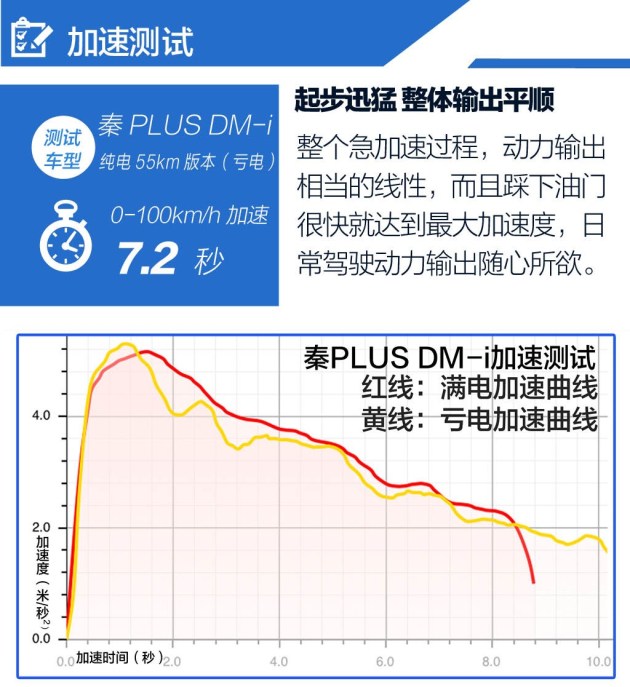
Through our actual measurement, the best performance of the -i 55km version at 0-100km/h is 7.2 seconds, while the official 0-100km/h acceleration performance is 7.9 seconds; Under the condition of power loss, we also measured that the best result of 0-100km/h acceleration of -i was 8.0 seconds. Therefore, even if the vehicle is in a state of power loss, it is not afraid of insufficient power, and its acceleration ability is similar to that of most medium-sized cars.
This is all due to the powerful EHS electric hybrid system, and the powerful motor guarantees the power demand. After a short acceleration sprint, the vehicle will enter a stable driving process. At this time, the power required to maintain the speed is only a few tens of kilowatts. The 1.5L engine carried by -i is sufficient, and the engine can also drive the generator to charge the battery at the same time.
Question 4: Will there be a sense of frustration when accelerating?
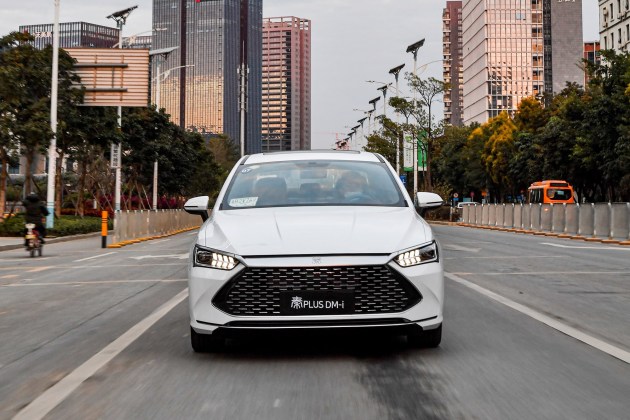
As can be seen from the graph of acceleration G value, at the initial stage of acceleration, -i bursts into the maximum acceleration in an instant, and then the acceleration process is relatively linear and smooth, unlike the previous plug-in hybrid models, there will be a sense of shifting frustration. Therefore, the driving quality of -i is more like an extended-range electric vehicle with smooth and silky power output characteristics.

Question 5: Is Qin PLUS DM-i quiet to drive?
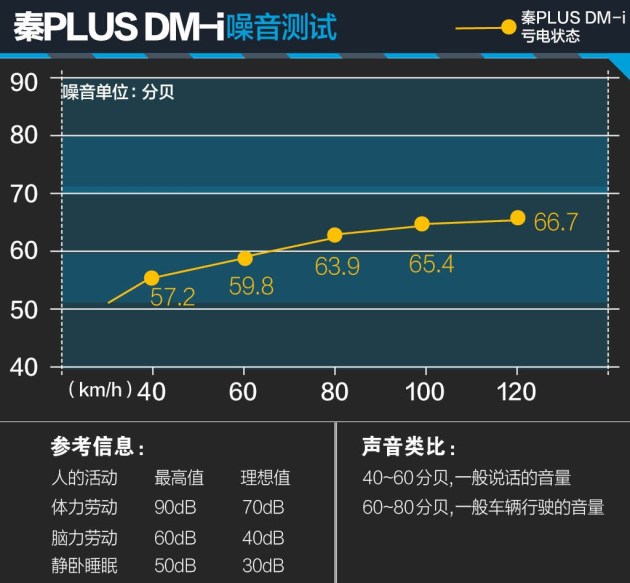
When the speed is below 60km/h, -i is driven by a motor, so the compartment is very quiet. On the highway, the engine runs at an economical speed, and the engine noise is not obvious. The engine noise can only be felt when the vehicle accelerates rapidly.
At high speed, the engine directly drives the vehicle, so stepping on the accelerator deeply will further increase the engine speed, and the engine noise will also be transmitted into the compartment at this time. Of course, the noise performance of the engine in the state of lack of electricity is more obvious than that in the state of full electricity.
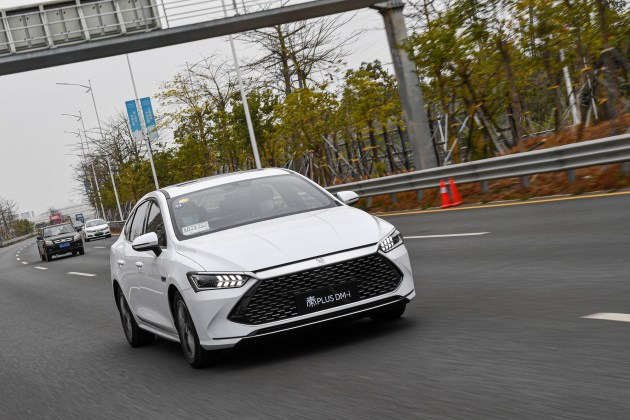
You can feel that the noise of -i is mainly tire noise and wind noise. -i used Jiatong’s Comfort F22 energy-saving tire, which performed well in terms of energy saving and durability, and the user’s use cost was low. One drawback is that this set of tires will make a lot of noise when running at high speed.
Generally, the human body is sensitive to the situation that the noise is greater than 65 decibels, so from the test results of the noise level inside the car, the sound insulation and noise reduction performance of -i is better than that of its own brand gasoline vehicles of the same level. Finally, there is still room for improvement in the roughness of engine noise during rapid acceleration. I suggest you go to the store to experience it before buying.

Question 6: How long does Qin PLUS DM-i need to be charged?

Only 220V AC slow charging is supported for the 55km vehicle with pure battery life. It takes 2 hours and 17 minutes (the initial power is 23%) to fully charge the pile at 7kW, which meets the official standard of 2.5 hours full charging. The 120km model with pure battery life supports both 220V AC slow charging and DC fast charging. The official said that the battery can be charged from 30% to 80% in 30 minutes.

Question 7: Will the battery break down and increase the cost of car use?
First of all, the power blade battery mounted on the -i can be guaranteed to charge more than 3,000 times, and the design life of the whole vehicle is 300,000 kilometers, which is equivalent to 10-15 years. At present, consumers who book cars can enjoy the first individual owner’s (non-operating) "Three Electricity" (motor, battery, electronic control) lifetime warranty, and the warranty policy of 6 years or 150,000 kilometers of vehicle warranty.

According to reports, in the process of developing new cars, the bench test exceeded 80,000 hours, and the bicycle was equivalent to 800,000 kilometers. The total test exceeded 8 million kilometers, all of which were tested in depth in the extreme climate of "high temperature, plateau and cold". In this way, consumers don’t need to worry about battery quality.

Question 8: How does the driving quality of Qin PLUS DM-i compare with that of the same price model?

In terms of chassis, -i adopts the front McPherson independent suspension and the rear torsion beam dependent suspension, which adjusts the eccentric sports style as a whole and has a clear road feeling. If you pass through some rough road sections, you can feel that the bumps are not completely filtered, and the overall comfort is slightly inferior to those of twin-engine and twin-engine models.

-i’s chassis has good support, especially when driving in sharp acceleration and on ramp corners. Suspension springs have done a good job in restraining the pitching and tilting of the car body, but if you want to do some intense driving, you don’t think it is suitable. After all, its positioning is still comfortable for family cars.
In the test, the acceleration of floor oil can easily lead to tire slipping, and the strong motor torque output always easily breaks through the tire grip. It is not recommended that consumers make too intense driving actions in daily driving, such as liking floor oil or slamming the direction.
Question 9: Are there any suggestions for improving the new car after the test drive?

There is still room for improvement in driving, such as steering too lightly in comfort mode. -i steering feels very light and easy to open, but the electric power steering is a little "overexert" and the movement mode is relatively normal. If the comfort mode is "tightened", it will be quite good.
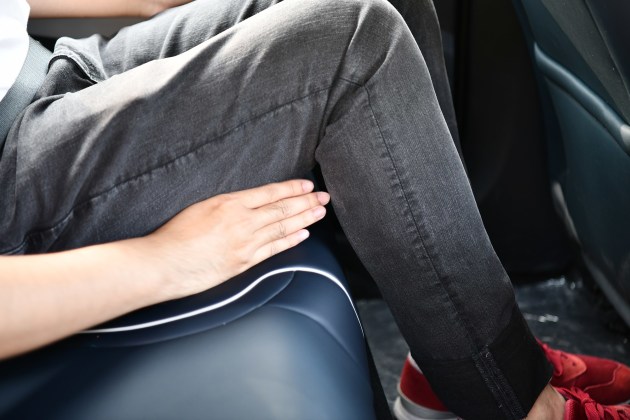
In terms of riding experience, the leg support of the -i rear seat is insufficient. I am 1.8 meters tall and have the feeling of sitting on a small bench in the back seat. In order to solve this problem, the angle of the rear seat cushion can be raised appropriately, and the angle of the backrest can be increased appropriately, so that the passenger’s sitting posture is more inclined to a semi-lying state, and the feeling will be better.

Another point is that leather seats are not perforated, which leads to general ventilation and breathability. For users in southern China, it seems a little uncomfortable in hot summer. To solve this problem, we can provide fabric seats, or add perforation treatment to the seat surface, or add seat ventilation/heating configuration to the top model for consumers to choose from.

Question 10: Are consumers in cities with "restricted cards and restricted lines" worth buying?
I think it’s worthwhile to buy a plug-in hybrid car with a green brand from 107,800 yuan. You can experience the driving quality similar to that of an electric car, and you don’t have endurance anxiety. You can solve the problems of license plate and transportation in big cities at a price that is close to the people. In addition, the safety performance is guaranteed and the cost of car use is low. What are the reasons for not considering buying it?

On -i, it shows the possibility that plug-in hybrid vehicles have high cost performance. -i has stronger acceleration performance than gasoline vehicles of the same class, and lower fuel consumption performance than hybrid vehicles of joint venture brands. Moreover, it can get a green license and buy a car free of purchase tax, which has the unique advantages of new energy vehicles.
If you have more questions or ideas about the new -i car, please continue to pay attention to my car number: Liang Shuming, and leave a message in the comment area below.

关于作者